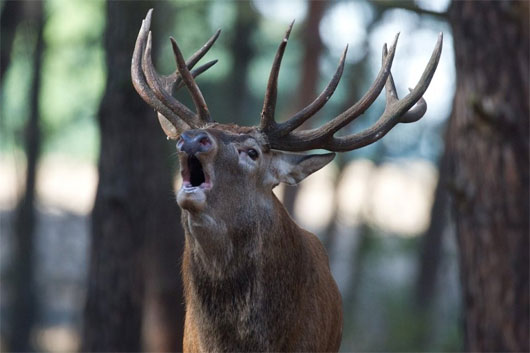Decipher the secret that can tame wild animals
Genetic experts of the Novosibirsk Institute of Cells and Genetics of the Russian Academy of Sciences deciphered the mechanism of animal domestication by finding a brown-black fox tamed a chromosome responsible for 'behavior by hand orders'.
>>>Why can't tame tigers or rhinos?
>>> Why can't humans tame wolves?
The DNA in the chromosome is exactly the same as in the chromosomes of dogs, the animals in evolution have come from wolves who are domesticated into domestic dogs.
In the genome-decoding experiment of the tamed brown-black fox, the scientists recorded common sequences of DNA between it and the dog. After that, more than a thousand animals at the farm were tested for behavioral testing.

Photo: planet.fr
As a result, scientists found that the connection between foxes and humans is due to the effects of genes located in the 12th chromosome.
These genes have relatives of the dog's chromosome 5, which have helped the last wild wolf to become a friendly pet in the home. These genetic characteristics identify the nervous function of animals.
Professor Lyudmila Trut, the leader of the research team, commented that domesticated foxes and ordinary dogs are very close to each other according to the evolutionary trend of body structure.
He also said that after identifying the genes responsible for the domestication of wildlife , Russian scientists are continuing to look for molecular mechanisms that were formed during domestication.
Russian scientists have also discovered that in addition to the "natural wild" habits , pets always show expressions of affection for people.
They make happy voices when they recognize the presence of acquaintances, ears and tails in a comfortable position, not stressed and they reduce the ability to attack strangers.
If further domestication continues, such animals can be kept in the house just like pets.
The results of the study helped answer the question of why some animals are domesticated, while others remain wild despite the efforts of humans.
- Mysterious children are raised by wild animals
- Why can't tame tigers or rhinos?
- How did humans tame cats?
- Why don't humans tame wolves?
- Decipher the mysterious 'beast' biting off the dog's head in Quang Ngai
- Photography: 'Talking eyes' of wild animals
- American wild boar 'invades' Mexico
- How was the circus lion domestication work done?
- Humans and dogs evolved together
- 7 differences between animals and wild animals
- Controversy over the origin of domesticated horses
- Why did Australia destroy 2 million cats?
 'Fine laughs' - Scary and painful torture in ancient times
'Fine laughs' - Scary and painful torture in ancient times The sequence of numbers 142857 of the Egyptian pyramids is known as the strangest number in the world - Why?
The sequence of numbers 142857 of the Egyptian pyramids is known as the strangest number in the world - Why? History of the iron
History of the iron What is alum?
What is alum?